


|
|
|
|||||||||||||||
|
|
||||||||||||||||
|
|
|||
|
|
Crete Agia Triada Monastery 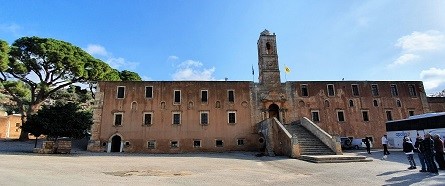
Located in the Akrotiri Peninsula, the Agia Triada (Holy Trinity) Monastery is an important monastic complex built at the end of the Venetian Occupation of Crete (1204 – 1669 AD). The monastery was built by two brothers, Jeremiah and Lavrentio Jagarolon who were part of the prominent Zangaroli Venetian-Cretan family. The monastery was begun by Jeremiah who developed a large existing complex, although he died in 1634 which is when Lavrentio took over the project. In 1645 the area fell into the hands of the Turks which resulted in the cessation of all building works which at that time had reached the point of the base of the great dome. During the Turkish occupation the Monastery was known as Selvilli Manastir which means the monastery with cypress trees. In 1821 during the Greek War of Independence (1821-1829) known as the Greek Revolution the monks left the monastery leaving many of the precious artefacts. This resulted in them being stolen or destroyed when the buildings were destroyed by fire. Following the uprising, the buildings were reconstructed and the monastery was finally completed. The monastery is entered through the main entrance with a belfry dating from 1864 over. This leads into a courtyard enclosed by a number of buildings. 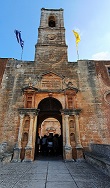 In the centre of the courtyard is the main church, known as the katholicon, which is dedicated to the Holy Trinity. 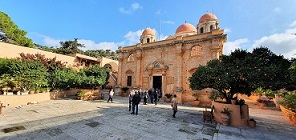 This has a narthex (See Glossary of Architectural Terms) at the front and contains a beautiful altar and iconostasis, paintings and artifacts and an elaborate candelabra. 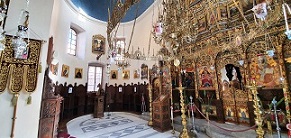 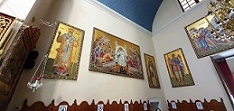 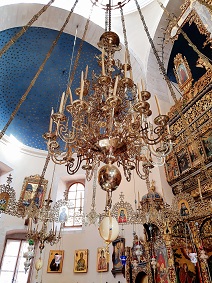 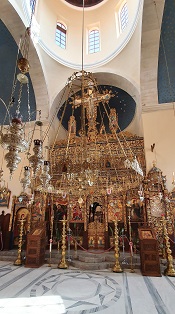 The main church is flanked by two smaller domed chapels; one is dedicated to the Life-Giving Spring and the other to Saint John the Theologian. The whole building is constructed in the Byzantine architectural style and includes three domes. In 1833 the monastery was established as an important theological school but in 1892, a seminary was established. Later in that decade the monastery was extensively damaged during the conflict with the Turks. Today the monks produce and sell wine and olive oil, which can be bought by visitors in the shop. The monastery also has a library that contains some rare books, and a museum that contains a collection of icons, codices and a selection of religious items and vestments. 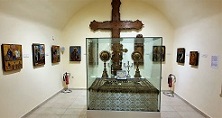 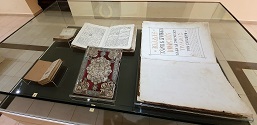 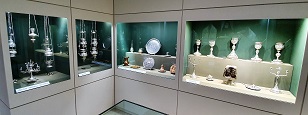 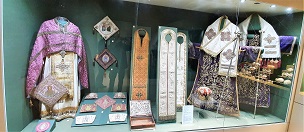 Visitors are also able to visit the wine cellar, the door of which dates to 1613. 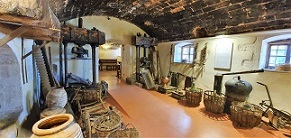 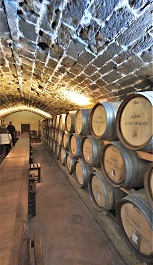 |
|
|
|
|
|||
All Photographs were taken by and are copyright of Ron Gatepain
| Site Map |